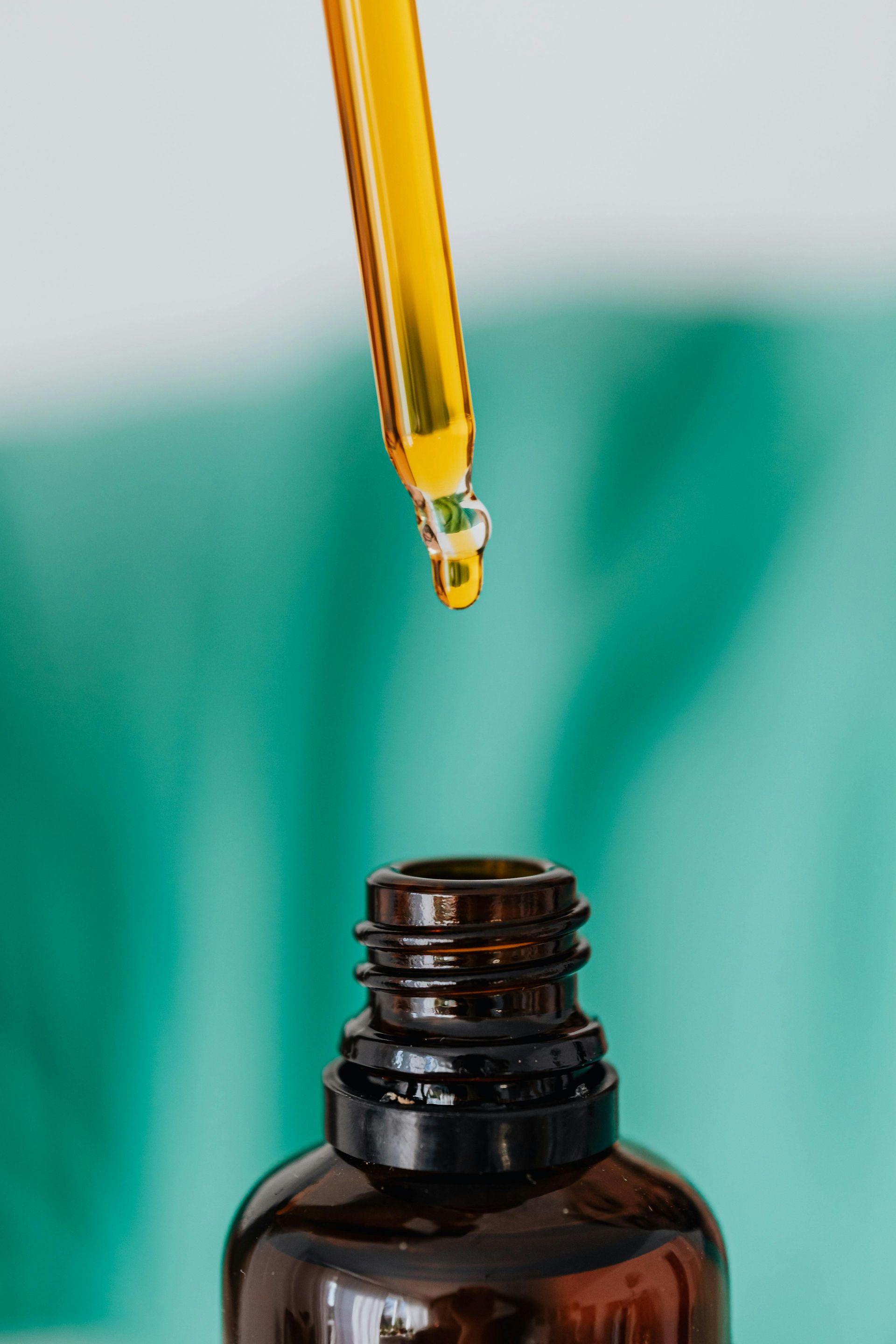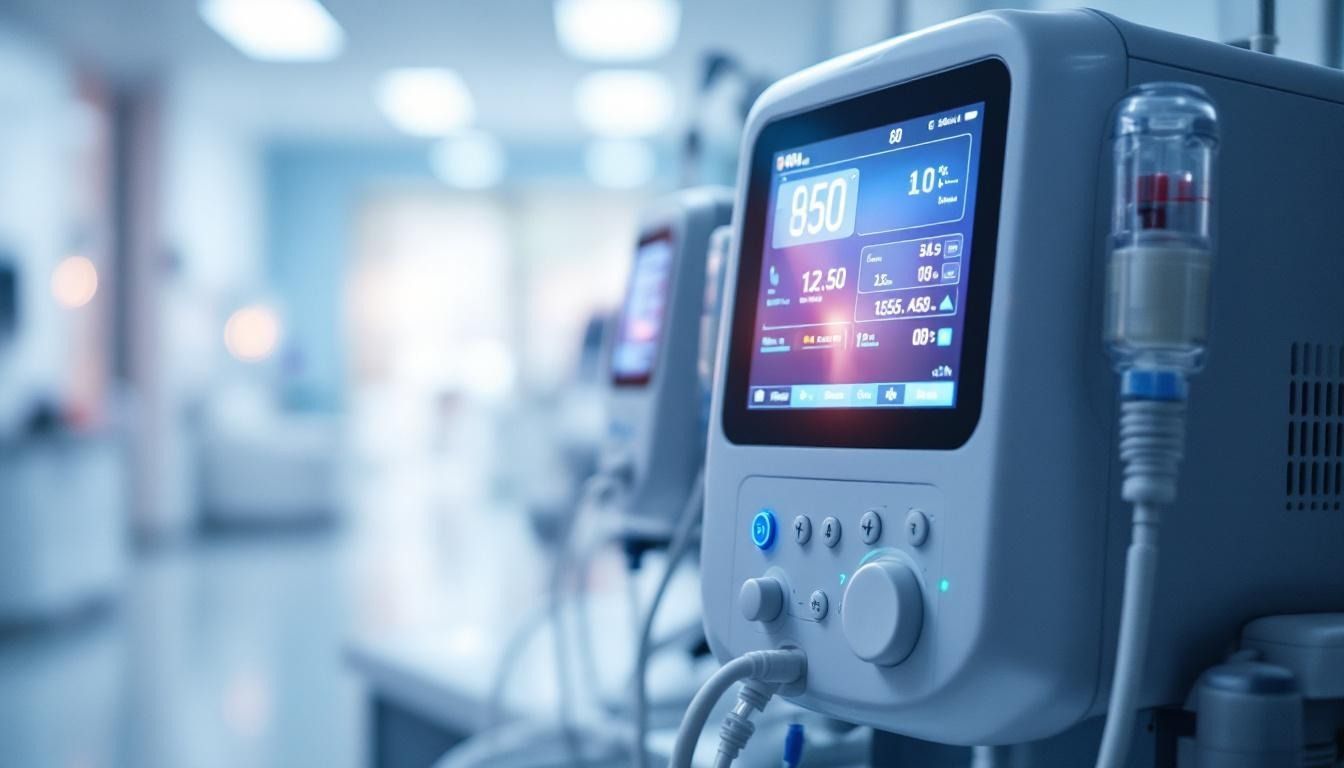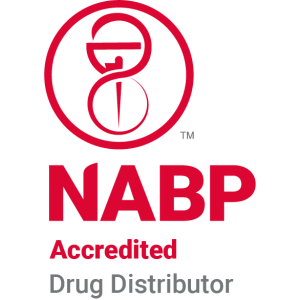What is intradialytic parenteral nutrition?
Understanding Intradialytic Parenteral Nutrition
Intradialytic parenteral nutrition (IDPN) represents a crucial innovation for addressing the nutritional needs of patients undergoing hemodialysis, particularly those suffering from protein-energy wasting (PEW). Given the prevalence of malnutrition among dialysis patients, IDPN has emerged as an essential therapeutic approach to enhance nutritional intake, aid in weight maintenance, and improve overall patient outcomes. This article explores IDPN's formulations, benefits, administration guidelines, and clinical significance, offering a comprehensive glimpse into this specialized nutritional support strategy.
Defining Intradialytic Parenteral Nutrition (IDPN)

What is intradialytic parenteral nutrition (IDPN)?
Intradialytic parenteral nutrition (IDPN) is a specialized form of nutritional support that delivers nutrients directly into the bloodstream during hemodialysis. This process involves infusing a solution containing essential nutrients through the venous drip chamber of the dialysis machine. The infusion is done continuously using an infusion pump which ensures a constant rate is maintained throughout the dialysis session, typically lasting about four hours.
IDPN is specifically designed for patients diagnosed with Protein-Energy Malnutrition (PEM), particularly those with chronic kidney disease (CKD) or acute kidney injury, who struggle to meet their nutritional needs through oral intake alone. It aims to provide substantial calories and protein—enough to fulfill at least 50% of a patient's nutritional requirements. IDPN typically comprises a balanced mix of amino acids, dextrose, and lipid emulsions, tailored according to individual patient needs.
How IDPN is administered
The administration of IDPN occurs during the hemodialysis session. Patients receive their nutrient infusion by connecting the IDPN solution to the venous port of the dialysis tubing. This method provides a convenient and non-invasive means of supplying additional nutrition while patients undergo treatment for kidney failure. IDPN solutions are generally introduced approximately 30 minutes into the dialysis session, continuing throughout the duration, seamlessly integrating with kidney support therapy while addressing malnutrition.
Primary targets for IDPN therapy
The primary goal of IDPN therapy is to improve the nutritional status of malnourished patients on hemodialysis. This improvement is assessed through various indicators such as weight gain, increased pre-albumin levels, and better nutritional assessment scores. Typically, IDPN is expected to enhance overall health outcomes in patients who cannot maintain sufficient oral nutrition. However, while IDPN can aid in improving some nutritional markers, it is not a substitute for a balanced diet, and the importance of proper oral nutrition cannot be overlooked. Regular monitoring during IDPN administration is vital to ensure patient safety and response to therapy.
Targeting Protein-Energy Wasting in Dialysis Patients

Connection between IDPN and protein-energy wasting
Intradialytic parenteral nutrition (IDPN) serves a pivotal role in addressing protein-energy wasting (PEW) among dialysis patients. Defined as a state of malnutrition that is common in this population, PEW arises from inadequate dietary intake, increased protein losses during dialysis, and chronic inflammation.
IDPN targets these issues by providing nutrients such as carbohydrates, amino acids, and lipids directly during dialysis sessions. This method ensures that patients, especially those who struggle to meet their nutritional needs through oral intake or dietary counseling alone, receive essential calories and proteins.
What are the benefits of IDPN in managing protein-energy wasting among dialysis patients?
IDPN offers several benefits for managing protein-energy wasting (PEW) among dialysis patients. It has been shown to significantly increase serum albumin levels, indicating an improvement in nutritional status, as well as promote an increase in body weight and spontaneous dietary intake.
Specifically, IDPN can boost total energy intake to approximately 27.6 kcal/kg/day, which is crucial for those unable to meet nutritional needs through diet alone. Additionally, the Malnutrition Inflammation Score (MIS) improves with IDPN treatment, reflecting a decrease in malnutrition and inflammation. Overall, IDPN acts as an essential nutritional support method for malnourished dialysis patients, contributing to better health outcomes.
Effectiveness of IDPN
While IDPN shows promise, evidence is mixed regarding its effectiveness compared to traditional nutritional strategies. Some studies indicate improved nutritional markers such as albumin and body weight, though its impact on long-term clinical outcomes like mortality rates remains inconclusive.
Thus, while IDPN is beneficial, it should be integrated into a wider nutritional strategy, reinforcing oral intake and dietary counseling as foundational components of care.
Guidelines for IDPN Administration

What are the administration guidelines for implementing IDPN?
Intradialytic parenteral nutrition (IDPN) is primarily indicated for patients on hemodialysis who are malnourished and unable to meet their nutritional needs through diet alone. To qualify for IDPN, patients should have a minimum oral intake of over 20 kcal/kg and 0.8 g of protein/kg of body weight per day.
The initial administration period typically involves a flow rate of 125 mL/hour during the first week of therapy. This rate may gradually increase to 250-300 mL/hour by the second week, depending on the patient’s response and nutritional parameters. Continuous monitoring of various metrics, such as dietary intake, muscle strength, and serum albumin levels, is essential throughout the treatment.
IDPN aims to supplement nutrients during dialysis sessions, enhancing overall nutritional status. A comprehensive evaluation of the patient’s dietary habits and weight changes helps determine ongoing needs. Importantly, the necessity for IDPN should undergo re-assessment every nine months to confirm its continued relevance.
Factors influencing IDPN administration
The decision to administer IDPN involves several considerations. Predominantly, it is used for patients showing clear signs of protein-energy malnutrition (PEM) in conjunction with inadequate oral intake. Clinical judgment, alongside established nutritional parameters, guides the initiation of IDPN.
Additionally, factors such as the severity of malnutrition, underlying conditions affecting nutrient absorption, and the patient’s overall tolerance to oral food or enteral feeding methods play pivotal roles. Monitoring responses to therapy is crucial, particularly noting changes in serum albumin levels and overall nutritional markers to gauge effectiveness.
IDPN should complement existing dietary strategies and is particularly beneficial when conventional nutritional supports, like oral supplements or dietary counseling, do not yield adequate results.
Comparing IDPN and TPN
How does IDPN compare to total parenteral nutrition (TPN)?
Intradialytic parenteral nutrition (IDPN) is specifically tailored for patients undergoing hemodialysis, designed to deliver nutrients during the dialysis sessions. This approach addresses protein-calorie malnutrition in these individuals. On the other hand, total parenteral nutrition (TPN) provides a more comprehensive nutritional regimen, supplying all necessary nutrients independently of dialysis. While both strategies aim to support malnourished patients, evidence indicates that IDPN does not significantly enhance health outcomes compared to standard care treatments or TPN, particularly among those who do not meet TPN eligibility criteria.
When should IDPN be used over TPN?
IDPN can typically supply about 25% of a patient’s required nutritional intake during dialysis, making it a supplementary option. TPN is recommended for those needing complete nutritional support, especially for patients unable to maintain oral nutrition due to severe conditions. Current guidelines suggest employing IDPN primarily when conventional nutritional strategies have proven ineffective. Thus, IDPN acts as an adjunct therapy focused on hemodialysis patients, while TPN serves as a more inclusive option for addressing the nutritional needs of patients across various medical contexts.
| Feature | IDPN | TPN |
|---|---|---|
| Nutritional Coverage | ~25% of nutritional needs during HD | Complete nutritional support |
| Administration | During hemodialysis sessions | Independently, via central line |
| Primary Use | For malnourished hemodialysis patients | For patients unable to intake orally |
Clinical Implications and Benefits
What are the clinical implications of IDPN use in hemodialysis patients?
The clinical implications of Intradialytic Parenteral Nutrition (IDPN) use in hemodialysis patients are profound. Primarily, IDPN facilitates significant improvements in nutritional status. Studies have documented increases in serum albumin and prealbumin levels following IDPN treatment. This is especially crucial for patients suffering from hypoalbuminemia, as higher serum albumin has been associated with better survival rates and decreased hospitalization rates.
Moreover, IDPN has demonstrated effectiveness over standard dietary approaches such as dietary counseling and oral nutritional supplements, notably in patients who cannot tolerate these other nutritional support methods. It plays a pivotal role in addressing protein-energy malnutrition, which afflicts 25% to 40% of dialysis patients.
Furthermore, clinical evaluations indicate that IDPN does not seem to exacerbate inflammatory markers, suggesting that it offers nutritional benefits without increasing the risk of inflammation, which is particularly beneficial for patients with chronic inflammatory conditions.
While initial cost analyses indicate that IDPN is more expensive upfront compared to traditional nutritional strategies, the enhanced potential for better patient outcomes—such as improved nutritional status and reduced complications—warrants its use in suitable hemodialysis patients.
Impact on hospitalization and survival rates
Administering IDPN can lead to a notable reduction in hospitalization rates for hemodialysis patients, with some studies suggesting a decrease by up to 30%. Additionally, the therapy has been linked to substantial reductions in the length of hospital stays, potentially shortening them by as much as 40%.
While it enhances immediate nutritional status, the longer-term implications on mortality rates remain less clear. Though improvement in nutritional indicators like serum albumin is established, larger trials have yet to definitively show a direct correlation with improved survival rates.
In summary, IDPN is a critical intervention aimed at mitigating malnutrition in hemodialysis patients, with implications for improved clinical outcomes and reduced healthcare resource utilization.
Understanding IDPN Composition
Ingredients of IDPN Solutions
Intradialytic parenteral nutrition (IDPN) solutions are carefully formulated to meet the unique nutritional needs of hemodialysis patients. Typically, these solutions consist of:
| Ingredient | Composition Range | Purpose |
|---|---|---|
| Amino Acids | 10% | Provides essential proteins for muscle repair and maintenance. |
| Dextrose | 40% - 50% | Supplies carbohydrates for energy. |
| Lipids | 10% - 20% | Offers essential fats for overall health and energy. |
| Vitamins/Trace Elements | Added as needed | Supports various metabolic functions. |
Each component plays a crucial role in combating protein-energy malnutrition, which is prevalent among patients undergoing dialysis.
Customization Based on Patient Needs
One of the strengths of IDPN lies in its ability to be tailored to individual patient requirements. The formulation can be adjusted based on:
- Patient's weight and height
- Existing medical conditions or contraindications
- Dietary restrictions and oral intake levels
This customization ensures that patients receiving IDPN can effectively meet their specific nutritional targets, aiding in improving their overall health and well-being during hemodialysis treatment.
While IDPN is not a complete substitute for oral nutrition, it significantly complements the dietary intake of patients, targeting those who may struggle with caloric and protein deficits due to their condition.
Selecting Candidates for IDPN
Criteria for Choosing IDPN
When considering Intradialytic Parenteral Nutrition (IDPN), specific criteria help identify suitable candidates. Primarily, IDPN is recommended for malnourished patients undergoing chronic hemodialysis who cannot meet their nutritional requirements through oral intake alone. Important factors include:
- Serum albumin levels : Candidates typically exhibit low serum albumin levels, often below 3.5 g/dL, indicating a higher risk of malnutrition and related complications.
- Weight loss : Significant recent weight loss should also be a consideration, identifying individuals whose nutritional intake has drastically decreased.
- Inadequate dietary intake : Patients not achieving dietary protein recommendations of at least 1.2 g/kg per day for hemodialysis may qualify.
Patient Assessment and Screening
Screening for IDPN candidates involves a thorough nutritional assessment, utilizing clinical judgment to evaluate:
- Medical history : Understanding previous dietary compliance, enteral feeding history, and gastrointestinal issues helps gauge a patient’s ability to absorb nutrients.
- Current nutritional status : Evaluating normalized protein catabolic rate (nPCR) and weight changes provides insights into a patient’s protein-energy balance.
- Clinical signs of malnutrition : Recognizing non-quantifiable factors such as physical appearance and energy levels adds context to laboratory findings.
- Exclusion criteria : It is essential to rule out any contraindications, which include severe hyperlipidemia and allergies to components used in IDPN formulations.
Incorporating these elements into patient evaluation allows healthcare providers to effectively select patients who would benefit the most from IDPN therapy.
Evaluating the Safety and Side Effects of IDPN
What are the side effects of IDPN?
Intradialytic Parenteral Nutrition (IDPN) is designed to be a safe and effective nutritional support solution for hemodialysis patients. However, like any medical intervention, it can be associated with potential side effects. The most commonly reported side effects of IDPN typically stem from the provision of lipids or using an infusion rate that exceeds the patient’s tolerance.
Patients undergoing IDPN may experience gastrointestinal disturbances, including:
- Nausea
- Vomiting
- Diarrhea
These symptoms are often manageable and can be minimized by moderating the infusion or titration rate. In some cases, patients might also report a sense of flushing during the administration of IDPN.
Monitoring for complications is an essential aspect of IDPN treatment. Healthcare providers should keep a close watch on potential issues such as:
- Hyperglycemia : Elevated blood sugar levels can occur due to the carbohydrate (dextrose) content in IDPN.
- Lipid Level Alterations : Fluctuations in lipid levels should be monitored to mitigate risks related to the infusion of fats in IDPN formulations.
Being vigilant about these potential side effects ensures that IDPN remains a beneficial treatment for malnourished hemodialysis patients.
Real-World Applications of IDPN
Case studies and outcome evaluations
In recent years, numerous case studies have explored the outcomes of patients undergoing Intradialytic Parenteral Nutrition (IDPN). One significant finding indicated that patients receiving IDPN showed improvements in serum albumin levels, which rose from an average of 3.5 g/dL to 3.8 g/dL over three months. This change is vital since low albumin levels are associated with increased mortality and morbidity risks in hemodialysis patients.
Another study assessed the nutritional impact of IDPN, highlighting increased dietary intake and weight gain, alongside a marked improvement in malnutrition inflammation scores. Notably, no adverse effects related to fluid overload were reported, supporting IDPN's safety during dialysis sessions.
Practical applications in clinical settings
The practical application of IDPN in clinical practice focuses on its role as a supplemental nutritional strategy. It is primarily reserved for malnourished hemodialysis patients who struggle to meet their nutritional needs via oral intake or dietary changes. Patients are typically evaluated for indicators of malnutrition, such as weight loss and low serum albumin levels.
Healthcare providers can utilize IDPN to deliver essential nutrients during the dialysis session, with typical formulations containing amino acids, dextrose, and lipids. This ensures a continuous nutrient supply without the need for a central venous line, making it a practical solution for managing nutrition in hemodialysis patients.
Impact of IDPN on Nutritional Metrics
Changes in nutritional metrics with IDPN
Intradialytic parenteral nutrition (IDPN) has been associated with several positive changes in nutritional metrics among hemodialysis patients. Studies indicate that IDPN can lead to improvements in protein-energy homeostasis, effectively shifting patients from a catabolic to an anabolic state. This is particularly beneficial for individuals struggling with protein-calorie malnutrition, as they often have difficulty maintaining adequate nutritional intake.
During IDPN infusion, patients demonstrated significant increases in plasma amino acid concentrations compared to control sessions without IDPN. Overall, IDPN is designed to provide supplemental calories and protein during dialysis sessions, which can help enhance patients' overall nutritional status.
Significant improvements in albumin and other markers
One of the major improvements observed with IDPN administration is the increase in serum albumin levels, which serves as a critical marker for nutritional status. Patients receiving IDPN have exhibited increases in serum albumin levels from 3.5 to 3.8 g/dL after three months of therapy. Improvements in other markers, such as pre-albumin and body weight, have also been noted.
Collectively, these changes suggest that IDPN can play a crucial role in addressing malnutrition in patients undergoing hemodialysis, helping to stabilize their nutritional parameters and potentially contributing to better health outcomes even in cases where traditional oral intake is inadequate.
Challenges and Controversies in IDPN Usage

Regulatory and Cost Concerns
Despite its potential benefits, the use of Intradialytic Parenteral Nutrition (IDPN) is hampered by various regulatory and financial obstacles. One primary issue is that IDPN is often determined to be medically necessary only under strict guidelines. Eligibility typically revolves around patients who could otherwise qualify for Total Parenteral Nutrition (TPN), particularly those with underlying alimentary tract pathologies. If patients are still able to consume oral nutrition, the necessity for IDPN becomes questionable, leading to debates about its cost-effectiveness compared to standard feeding methods.
The costs associated with IDPN can also be significant, given that many chronic hemodialysis patients might need ongoing nutrition support. This has resulted in reports of limited accessibility for patients, particularly in healthcare systems that prioritize more traditional forms of nutritional support.
Differing Clinical Guidelines
Another challenge surrounding IDPN involves conflicting guidelines from clinical organizations. While bodies such as the National Kidney Foundation (NKF) and the Kidney Disease Outcomes Quality Initiative (KDOQI) recognize IDPN for certain malnourished patients, the recommendations vary regarding when it should be implemented. The NKF KDOQI often suggests IDPN as a solution when oral supplementation fails, whereas ESPEN guidelines imply it should follow dietary counseling. This inconsistency reflects the need for further research into optimal patient care practices and underscores the necessity for individualized patient assessment.
These controversies and challenges highlight the complex landscape of IDPN in clinical practice, warranting careful consideration by healthcare providers.
Future Directions and Research

Current Gaps in IDPN Research
Despite the established use of intradialytic parenteral nutrition (IDPN) to support malnourished hemodialysis patients, there are notable gaps in the research landscape. Clinical studies have yielded mixed results regarding the efficacy of IDPN compared to standard nutritional interventions, such as oral supplements and dietary counseling.
One critical area requiring further investigation is the long-term health outcomes of patients receiving IDPN. While some studies report improvements in serum albumin levels and weight gain, the evidence remains inconclusive regarding significant reductions in mortality or hospitalization rates. Understanding these long-term effects is vital to bolster clinical guidelines.
Potential Areas for Future Investigation
There are several promising areas for future research. First, there's a need for comprehensive studies that explore patient-specific factors influencing the success of IDPN therapy, including the timing of initiation and individual nutritional needs.
Second, the development of standardized protocols for administering IDPN and criteria determining patient eligibility can streamline therapy and improve outcomes across diverse clinical settings.
Finally, researching alternative formulations or delivery methods for IDPN could enhance its application, addressing both efficacy and tolerability. Investigating these aspects could lead to better management protocols for malnutrition in hemodialysis patients, ultimately minimizing health risks associated with protein-energy malnutrition.
Patient and Provider Perspectives on IDPN
Patient Experiences
Patients undergoing intradialytic parenteral nutrition (IDPN) often cite improvements in their overall well-being. Many report feeling less fatigued and more energized due to enhanced nutrient intake during their hemodialysis sessions. Increased serum albumin levels have been linked to weight gain and an improved sense of vitality, as nutritional status markedly impacts quality of life for those battling malnutrition. Many patients appreciate the convenience of receiving nutrition during dialysis rather than having to schedule additional appointments or find ways to manage inadequate oral intake.
However, some patients have experienced side effects like nausea or diarrhea, particularly when IDPN is administered at higher infusion rates. Various factors, including the pace of nutrients and individual tolerances, can impact the overall experience with IDPN, and managing these factors is crucial for optimizing patient outcomes.
Training Requirements for Healthcare Providers
Healthcare providers play a pivotal role in the successful implementation of IDPN. It’s essential for clinicians to have a comprehensive understanding of IDPN protocols, including patient selection criteria and infusion techniques. Training must ensure that providers can effectively assess nutritional needs, monitor patient responses, and make necessary adjustments to minimize adverse reactions.
Moreover, familiarity with assessment parameters, such as serum albumin levels and weight changes, is crucial. Training resources should also focus on emerging clinical guidelines and best practices, ensuring that providers can effectively address concerns about malnutrition in dialysis patients.
Reflecting on IDPN's Role in Dialysis
Intradialytic parenteral nutrition (IDPN) stands as a promising therapeutic tool for managing malnutrition among hemodialysis patients. Its ability to complement dietary intake and directly deliver essential nutrients during dialysis sessions makes it a crucial intervention for patients who face significant nutritional challenges. While IDPN presents clear benefits, including weight maintenance and improved nutritional markers, continued research and clinical practice enhancements are needed to refine its implementation and maximize patient outcomes. By addressing these needs, IDPN can continue to play a transformative role in the care of dialysis patients, ultimately leading to enhanced quality of life and health sustainability.
References
- [PDF] Intradialytic Parenteral Nutrition (IDPN) - BC Renal
- Intradialytic parenteral nutrition for patients on hemodialysis
- Intradialytic Parenteral Nutrition
- Intradialytic Parenteral Nutrition - an overview | ScienceDirect Topics
- Intradialytic parenteral nutrition improves protein and energy ...
- Intradialytic parenteral nutrition - Wikipedia
- [PDF] INTRADIALYTIC PARENTERAL NUTRITION (IDPN)













